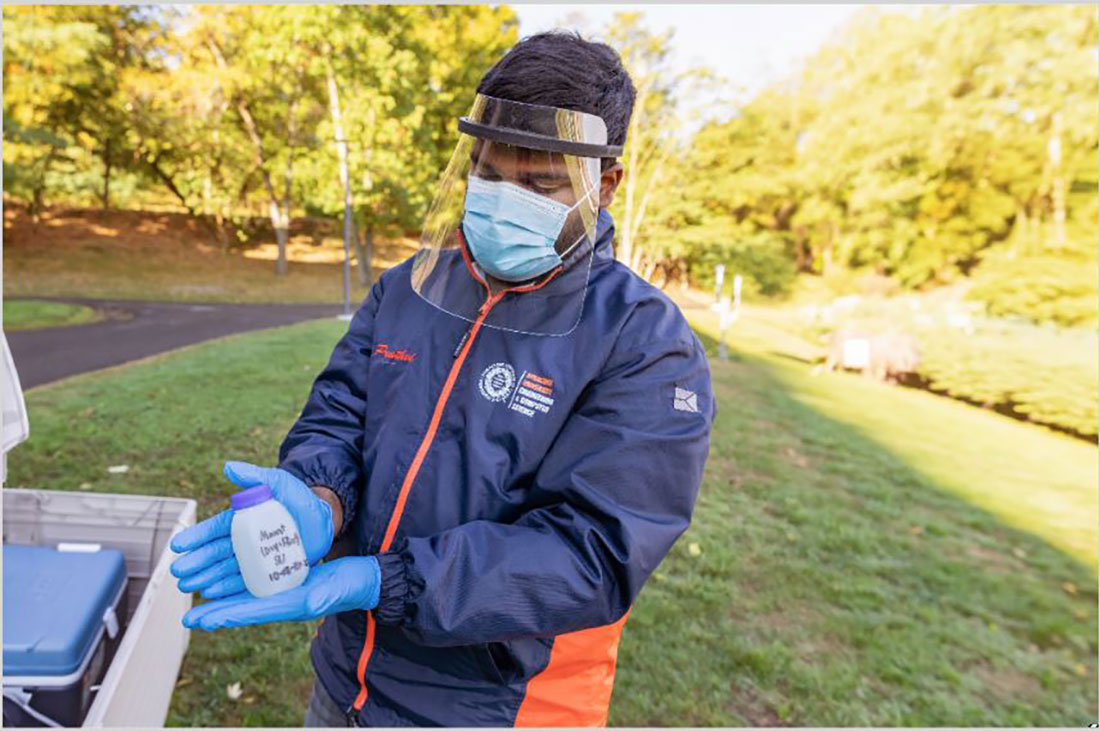
Testing wastewater for COVID-19 provides a better forecast of new COVID hospital admissions than clinical data, according to a Syracuse University research team led by postdoctoral researcher Dustin Hill.
The COVID-19 pandemic has been a burden on the U.S. health care system since its arrival in early 2020. COVID remains a threat to our communities, particularly during the winter months when new cases and hospitalizations are likely to surge. The ability to predict where and when new patients will be admitted to hospitals is essential for planning and resource allocation.
“Our findings indicate that wastewater surveillance improves prediction models for hospitalizations by 11 percent over models that use case data at the county level and by 15 percent for regional hospitalization estimates,” said Hill, an environmental data scientist and epidemiologist who works in the Department of Public Health at Syracuse University’s Falk College of Sport and Human Dynamics. “When looking at how many beds a hospital has available, those percentages can make a big difference in whether that hospital is going to have space for new patients or not, and this data can help them get ready for changes.”
Hill led a project that used wastewater surveillance data in predictive models to improve estimates for new COVID hospital admissions in New York State. The research team’s results were published recently in the peer-reviewed journal Infectious Disease Modeling and were gathered in collaboration with State University of New York at Albany, University at Buffalo, State University of New York College of Environmental Science and Forestry, Stony Brook University, and the New York State Department of Health.
Throughout the pandemic, hospitalization forecasting models have relied heavily on clinical data collected from polymerase chain reaction (PCR) and antigen tests. But these data can be biased because of a lack of widespread testing and may not be quick enough to indicate a surge.
In their study, the researchers combined wastewater surveillance data (how much SARS-CoV-2 is found in wastewater) with clinical case and comorbidity data to predict the seven-day average of new hospital admissions 10 days after the wastewater sample collection.

Wastewater data are being collected across New York State through the New York State Wastewater Surveillance Network, and that data can be used to continuously update forecasting predictions each week. According to the research, the average difference between predicted hospitalizations and observed hospitalizations was 0.013 per 100,000 population, or 1.3 in 10,000,000 population, providing high accuracy.
The New York State Wastewater Surveillance Network is testing for COVID in at least one wastewater treatment plant in each of the state’s 62 counties, covering a population of more than 15.3 million. The New York State Wastewater Surveillance Network dashboard provides the most recent statistics regarding the network.
The research team is exploring how their methods to predict COVID hospitalizations can be further refined and applied to other infectious diseases such as RSV and influenza as wastewater surveillance expands to cover these public health threats.
“Predicting future hospitalizations using wastewater data helps get our public health partners in front of surges before they happen so they are prepared when new patients need to be admitted and can distribute resources accordingly,” Hill says. “The methods we developed here are going to be instrumental for tracking the diseases we already know about, and perhaps even more important for the diseases that could arise in the future.”
